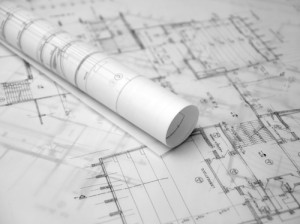Understanding Construction Project Delivery Methods
Construction is an extremely broad industry and every construction project is unique in its own way. Projects differ  in physical size, cost to construct, geographic locale, and construction market sector. Regardless of the unique attributes that may define a project the primary objective of almost every project is on time completion that comes in on or under budget. The primary process that governs the execution of the construction process is known as the delivery method. Delivery methods are used to facilitate the selection process for project participants like the designer and the constructor, while at the same time creating parameters that will manage the entire design and construction process. Listed below are the four primary construction delivery methods currently utilized in the industry accompanied by an overview of each.
in physical size, cost to construct, geographic locale, and construction market sector. Regardless of the unique attributes that may define a project the primary objective of almost every project is on time completion that comes in on or under budget. The primary process that governs the execution of the construction process is known as the delivery method. Delivery methods are used to facilitate the selection process for project participants like the designer and the constructor, while at the same time creating parameters that will manage the entire design and construction process. Listed below are the four primary construction delivery methods currently utilized in the industry accompanied by an overview of each.
Design-Bid-Build (DBB)
The Design-Bid-Build delivery method is one of the most commonly used methodologies for managing and executing a construction project. The first action an owner utilizing this delivery method does is hire the design team, usually composed of an architect and an engineer (A/E). The A/E team then prepares design documents which encompass the drawings and technical specification for the project. In most cases once the construction documents are complete they are sent to General Contractors for pricing. In order to obtain competitive pricing, the design team usually invites a minimum of three contractors to bid on the project. The primary criteria driving contractor selection utilizing this delivery method is lowest construction price. Once the lowest priced bid is selected the owner directly contracts with the General Contractor to execute the construction portion of the project. In theory the DBB delivery is supposed to furnish project stakeholders with the best possible price, but this doesn’t always happen. The Design-Bid-Build isolates the contractor from the design process and limits the level of collaboration between owner, designer and contractor. This being the case conflicts or “gaps” in the drawings become change orders that add both time and cost to the project. Conflicts and gaps can also lead to differing interpretations of quality between the construction team and the design team. The Design-Bid-Build is the most widely used construction project delivery method used, especially for public project procurement. The wide scale adoption is based more on tradition than actual functionality and project performance. The design-bid-build process works optimally on projects that are simple, have a clearly defined schedule and a limited budget.
Design/Build (DB)
The Design/Build project delivery method utilizes one firm or business entity to perform all aspects of the design and construction process. This methodology provides one point of contact for the owner throughout the project and nurtures an environment of cohesion between the design and construction processes. Usually the Design/Build delivery method is used for construction projects where the owner has a clearly established design intent and specified project requirements. One of the major benefits derived from Design/Build engagements is the high-quality communication between the design team and the construction team. Quality communication allows for construction input at the beginning of the design phase which helps the owner establish a firm price earlier in the process and allows for more in depth value engineering, subcontractor pricing review, and constructability analysis. The Design/Build method also provides the opportunity to reduce the project schedule by eliminating the bidding and procurement components from the process. Projects can also be broken up and split into phases where portions of the project are designed and built in a manner that helps meet schedule milestones and the final completion date.
CONSTRUCTION MANAGER AT RISK (CMAR) 
The Construction Manager at Risk delivery method is one of the newer delivery methodologies used to manage and execute construction activities. Unlike the traditional design-bid-build delivery the Construction Manager (CM) is selected by the owner in the pre-construction process, and the selection criteria is based on qualifications not just a low price. As a result, construction pricing and estimating begins during the design phase of the project with a final guaranteed maximum price (GMP) provided to the owner before the start of construction. In many cases the qualification-based selection process utilizes criteria related to project type experience, company track record and reputation, project approach, project schedule, and CM fee. This delivery method requires a sophisticated owner that is committed and comfortable with being highly involved in the construction and design process. In addition, it requires an owner to see the constructor as a valued member of the team instead of a project cost. The strength of this delivery method is transparency and collaboration. The CM becomes a member of the project team early and as such provides valuable input to the owner and the designer. The construction manager also acts an owner’s representative during the contrition phase of the project because the CMAR delivery method allows for a greater understanding of the project owners goals, capabilities, and constraints. Equipped with this information the CM is able act on behalf of the project owner to make informed data driven decisions that provide maximum benefit to the project, and not the constructors bottom line. The Construction Manager at Risk delivery method is useful for a number of different project execution applications. It can be used for large or small projects, projects with undefined scopes, extremely complex projects and projects that have an aggressive schedule completion deadline.
INTEGRATED PROJECT DELIVERY (IPD)
Another new and innovative way to execute construction projects is the Integrated Project Delivery (IPD) method. Using IPD the Architect/Engineer and Constructor are selected by the owner at the same time. All three parties, owner, designer, and constructor sign a joint contract based on mutually agreed upon project goals and objectives which truly creates a formalized team dynamic structure. The designer and constructor contractually become one entity which spreads risk and reward evenly amongst each party instead of being assigned to only one member of the project team. The high levels of collaboration and transparency associated with this delivery are drivers to reducing overall project risk that usually surfaces due to poor communication and information exchange. IPD as a delivery method is a complete paradigm shift compared to traditional delivery methodologies, but as the industry evolves and greater levels of trust and collaboration are developed within the architecture, engineering, and construction supply chain IPD will see greater levels of adoption and utilization. Integrated Project Delivery works best for private sector projects without high levels of detailed specifications and tight schedule timelines. Public sector projects could also benefit from IPD, but policies need to be created that properly address a procurement strategy that is somewhat devoid of a true competitive bid and selection process.
Construction project delivery methodology is an extremely important component of the construction progress. If a set of construction drawings is the road map for a project, consider delivery method to be the vehicle the project team decides to drive during the execution of the project. When a person decides to rent or buy a car they make a choice based on make, model, year, gas mileage and performance. Project owners need to utilize a similar decision matrix when choosing a delivery method for their construction project. Every construction delivery method has its advantages and disadvantages, but selecting the one that works best needs to be based on the project requirements and the performance metrics that drive successful, on time, on budget, high quality outcomes.

